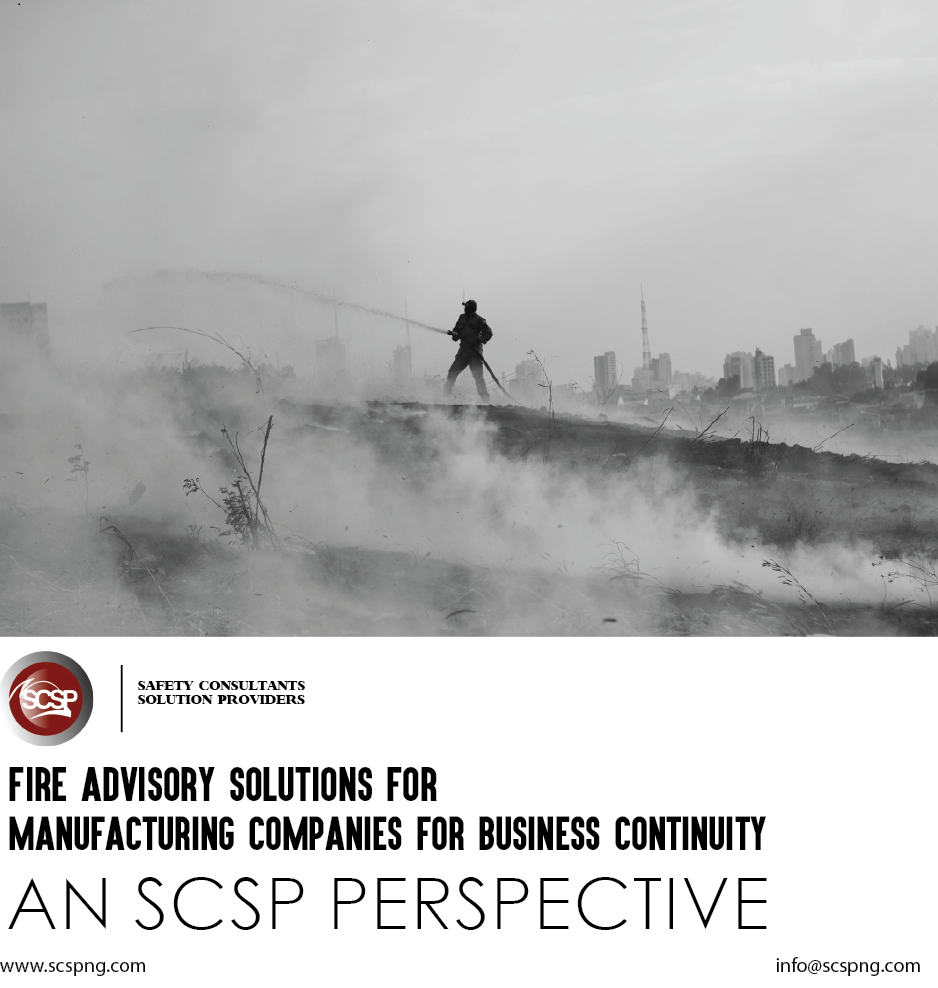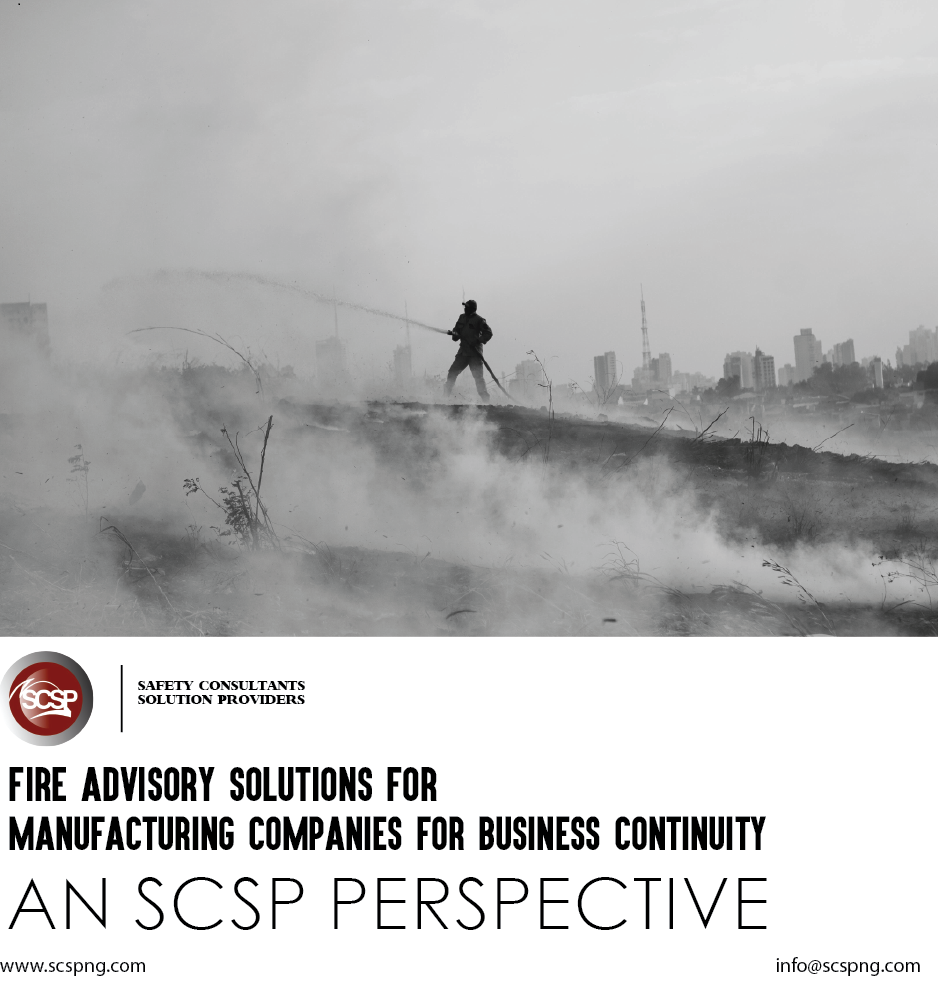One area in which the concern for safety is growing rapidly is the manufacturing industry. Apart from the cost due to downtime overtime, work loss of wages and equipment, over varying unplanned human and material destruction is usually unbearable. Much more with globalization in the sector, an accident in one facility or company can cause cross sectoral or cross border economic and social damage. This comes in addition to the inevitable scarcity as a result of abrupt stoppage of production. In that vein safety professionals are redoubling their efforts to minimize risks associated with fire at manufacturing facilities to sustain continuous operation.

One area in which the concern for safety is growing rapidly is the manufacturing industry. Apart from the cost due to downtime overtime, work loss of wages and equipment, over varying unplanned human and material destruction is usually unbearable. Much more with globalization in the sector, an accident in one facility or company can cause cross sectoral or cross border economic and social damage. This comes in addition to the inevitable scarcity as a result of abrupt stoppage of production. In that vein safety professionals are redoubling their efforts to minimize risks associated with fire at manufacturing facilities to sustain continuous operation.
GLOBAL FATAL CASES OF FIRE INCIDENTS AT MANUFACTURING FACILITIES
Rising incidents of industrial fires is alarming. According to the most recent statistics from the National Fire Protection Association (NFPA), an average of 37,000 fires occurs at industrial and manufacturing properties every year. These incidents resulted in 28 civilian deaths and about 279 injuries. In the United States, there is a record of about 6,500 fatalities per year with about 5897 deaths and disabling injuries. In the United Kingdom, there are about 203,113 recorded injury accidents with about 45,6677 non- injury cases annually. In France, 86, 250 fire occupational accidents, including 1, 597 fatalities are reported annually. For Finland, about 20,016 fire hospitalization injuries are on record yearly. In Latin America, the number is as high as 13.5 per 100,000. In Nigeria, the situation is not good as inferred in the report by Nigerian Institute of Safety Professional (NISP) which reveals that over 11,000 people die from fire related accidents each year and that a worker is injured every 18 seconds in the manufacturing sector in Nigeria.
POOR SAFETY LEGISLATION
Despite the large numbers of national and international safety monitoring and enforcement agencies, hazardous conditions are still prevalent in the manufacturing sector across the globe. In developing countries, the situation is scary as lack of awareness of updated safety laws hinders compliance. In other climes, weak functional institutions that are being maneuvered or dictated by elites has paved the way for most manufacturing companies that are managed by foreign nationals to break and out rightly detest safety principles and standards.
REVIEW OF PENALTIES FOR FIRE INCIDENTS IN THE MANUFACTURING WORLD
Fire catastrophes often overlooked and highly deadly are not easy to contain as much premium is placed in preventing their occurrence and building back the business. Just recently, OSHA fined a manufacturing company $150,000 after a worker was injured while operating a dust collector. Investigation showed outright violation to workers’ protection law. In 2022, a textile company was fined $45million after its production room collapsed, killing about 8 workers. The building violated structural requirements and safety measures during production were constantly neglected. In 2014, a pier fire in California wrecked more than $100million in damage when it caused a partial collapse of a warehouse floor. Similarly, in 2014, Monckton Coke and Chemical company; a waste management industry, were fined $30,000 for breaching fire safety rules following a fire at its premises where two workers were severely injured. More so, in 2010, the power plant explosion in Middletown, CT which killed 6 people revealed many safety violations; many of which OSHA deemed “willful”. The agency subsequently fined the companies involved $16.6 million, one of the largest penalties ever issued.
Fire Strategy, Fire Risk Assessments and Audits, Fire and Emergency Warning, Means of Egress, Fire Spread, Access for Fire Response Service, Active Fire Protection Systems, Fire Safety Management for the Building, and Fire Strategy Recommendations.
Fire Advisory encompass the following:
- Fire emergency evacuation and crowd control.
- Fire hazard investigations, fire safety case for insurance underwriters, expert witness and arbitration.
- Emergency evacuation and crowd control.
- Fire emergency evacuation and crowd control.
- Fire spread with fire resistant construction and materials within a facility.
- Fire response services and fire safety management systems.
- Fire strategy consultancy for fire safety assessments, fire hazard investigations, fire safety case for insurance underwriters, expert witness and arbitration.
- Personnel and training for capacity development of fire responders and managers.
FIRE RISK MITIGATION STRATEGIES
Fire Advisory solutions involves Principal Fire Safety Features; Report Limitations; Development Description; Goals, Objectives, and Performance Requirements; Building Population; Means of Warning and Escape; Emergency Lighting and signage; Internal Fire Spread; Structural Fire Protection; External Fire Spread; Fire Service Access and Facilities; and Management Strategy.
The objective of fire preventive activities is to ensure that risk to people’s health and safety at work and the flow of production and activities is enhanced. Some of the safety strategies will include:
CONDUCT A HAZARD ANALYSIS: Carrying out a hazard analysis of the entire facility to discover exactly where your greatest risk lies and what you can do to address them is a key requirement of NFPA 652, and 626.
INSPECT AND MAINTAIN YOUR EQUIPMENT & SYSTEM: Keeping all your equipment and systems in proper working order will enhance Safety and make operations at optimum level. A good rule of thumb is to perform inspections every six months.
PROVIDE FIRE SAFETY TRAINING: Fire safety is of uttermost importance. In a potentially hazardous environment, providing general and job specific fire safety training to everyone is beneficial.
AWARENESS: You cannot prevent risks you do not know exist. Conversely, a blank knowledge of safety tips so that everyone around knows what risks to watch out for and what to do if they find one.
REGULAR HOUSEKEEPING ROUTINE: implementing a regular housekeeping routine can significantly decrease the chances of small sparks turning into a huge disaster. Little checks consistently can place safety value in your facility.
Fire Strategy, Fire Risk Assessments and Audits, Fire and Emergency Warning, Means of Egress, Fire Spread, Access for Fire Response Service, Active Fire Protection Systems, Fire Safety Management for the Building, and Fire Strategy Recommendations. Visit SCSP at https://scspng.com/ for more details.











